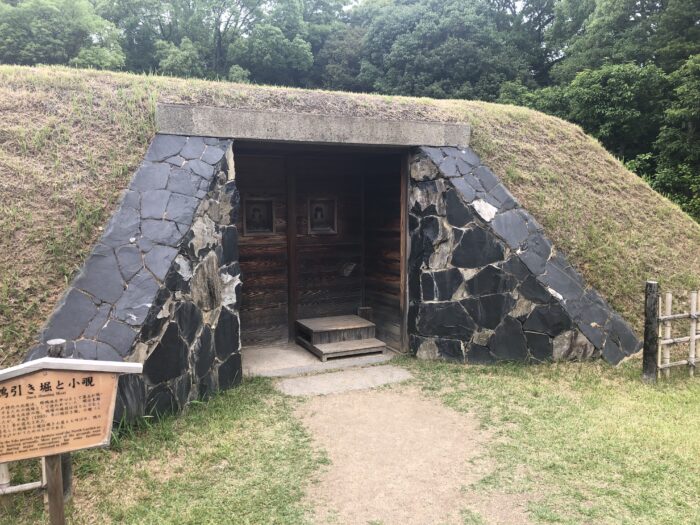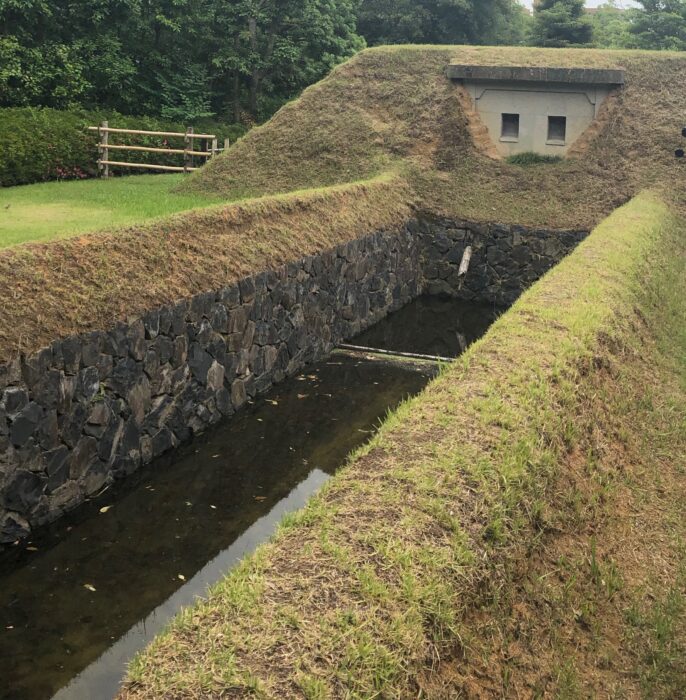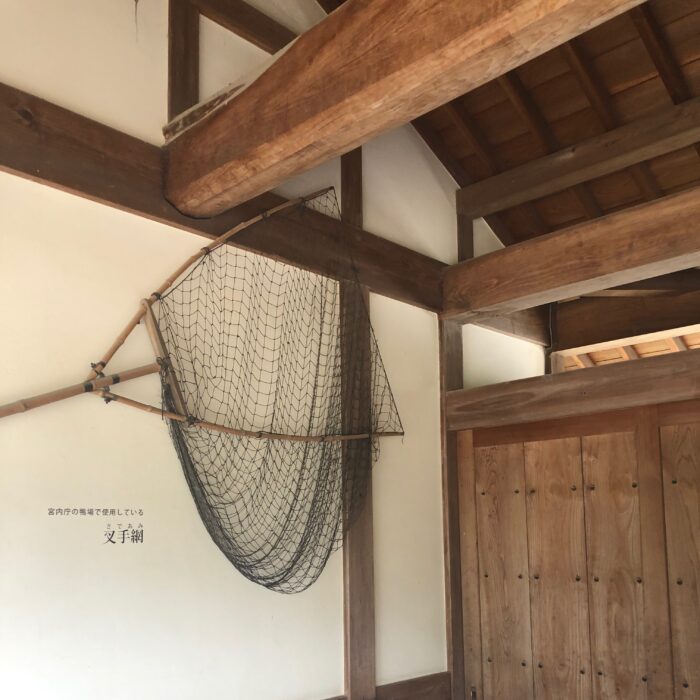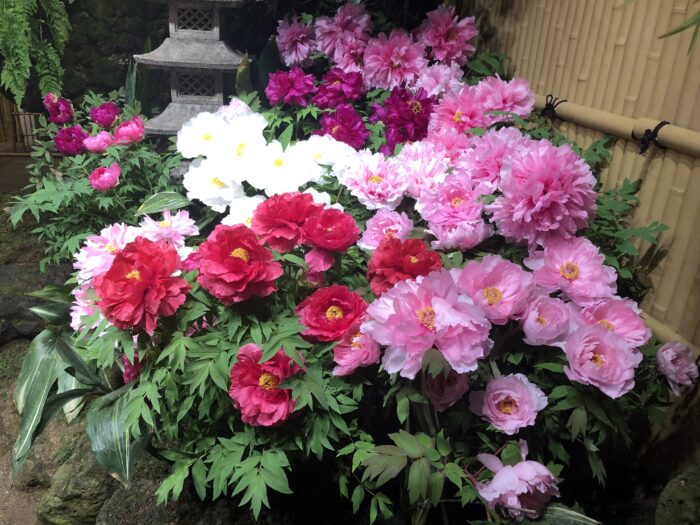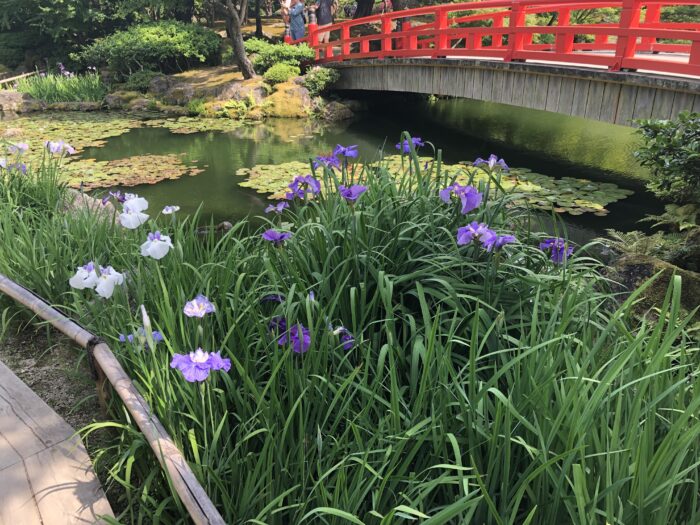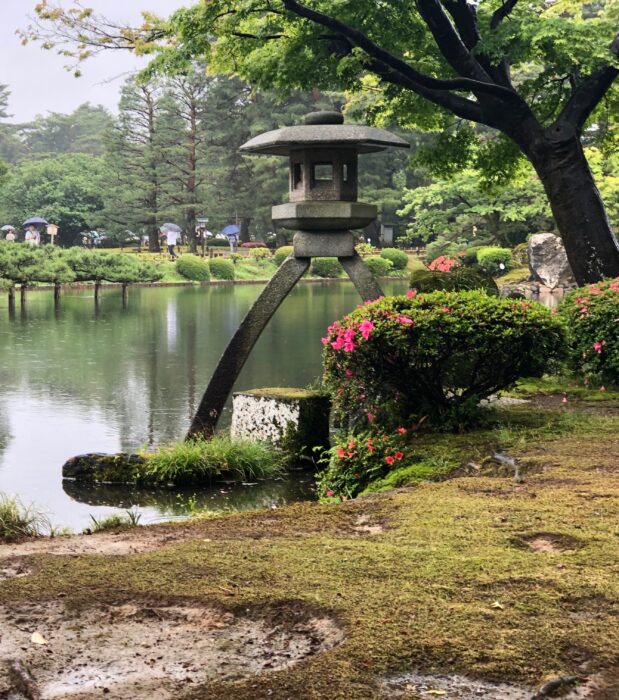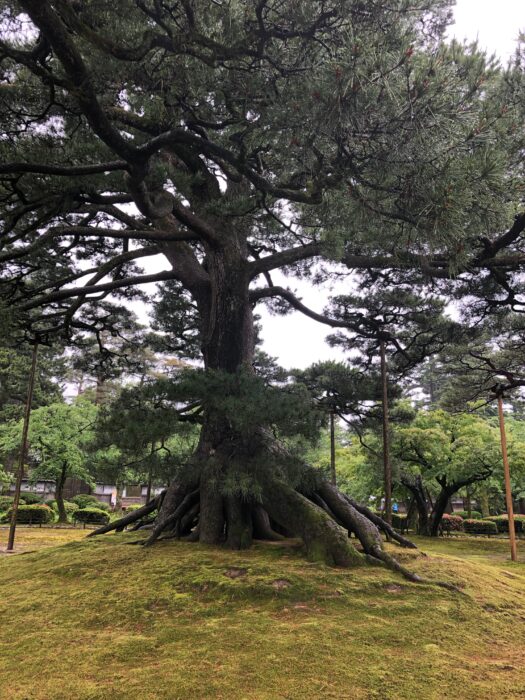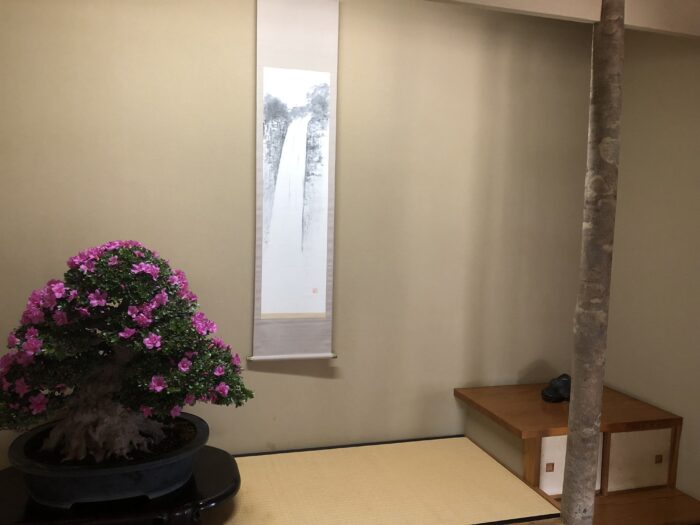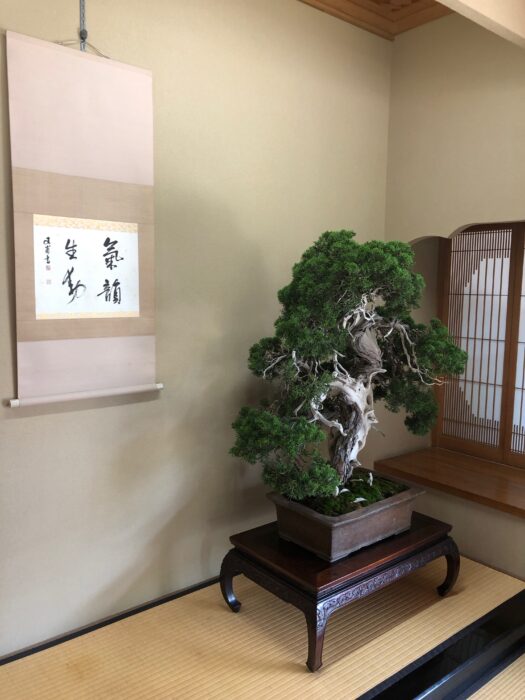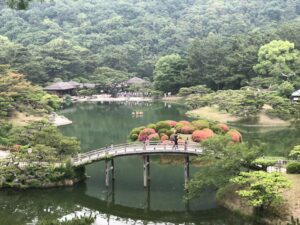
A Japanese garden such as Ritsurin Park provides viewers with an idealized view of nature that contains six basic elements: extensive space; a sense of seclusion; water features; natural views; traditional elegance, and human artistry. The gardens in this blog are in the kaiyushiki [strolling] style, so that visitors can easily wander the paths around the pond.
RITSURIN PARK
The Ritsurin Park on the island of Shikoku was built in the 17th century by the daimyo [lord] in charge of the area to protect his people from famine. The word Ritsurin means Chestnut Forest. The daimyo planted three types of trees: chestnut trees for their starchy nuts, gingko trees because they retain water, and lacquer trees.
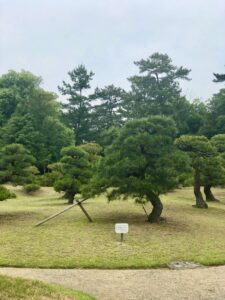
Today there are no chestnut trees in the 185 acre strolling garden with its 6 ponds and 13 landscaped hills. Among the plants are 1,000 black pine trees, some over 300 years old, and 70 maple trees.
One intriguing feature is the duck blind once used by samurai for duck gathering. The duck pond is narrow and not terribly long. The hunter hid on the other side behind the blind and threw food into the pond to lure the ducks which could be easily shot, because they didn’t have enough space to become airborne. The hunters scooped up their prey in large nets.
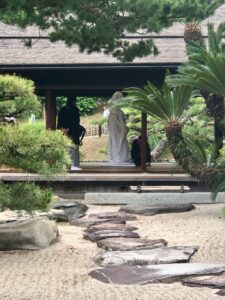
The Kuy Kigurahsi-Teri tea house, built in 1700, is at the center of the garden. The day we were there, a Shinto wedding was taking place. The bride is dressed entirely in white with a white hood on her head. The color white can change to another color, just as a bride in white can change to accommodate her husband. The hood is to prevent the bride from growing the horns of jealousy.
YUUSHIEN GARDEN
The Yuushien Garden on Daikonshima Island is famous for its cultivation and display of twenty different varieties of peonies. The garden is small, with a size of only 40,000 square meters, and was created forty years ago by Yuushien. Everything in the garden was transported from across Lake Nakaumi including stones, soil, and trees. In addition to over 250 types of peonies, there are azaleas, rhododendrons, and iris flowers.
KENROKU-EN GARDEN
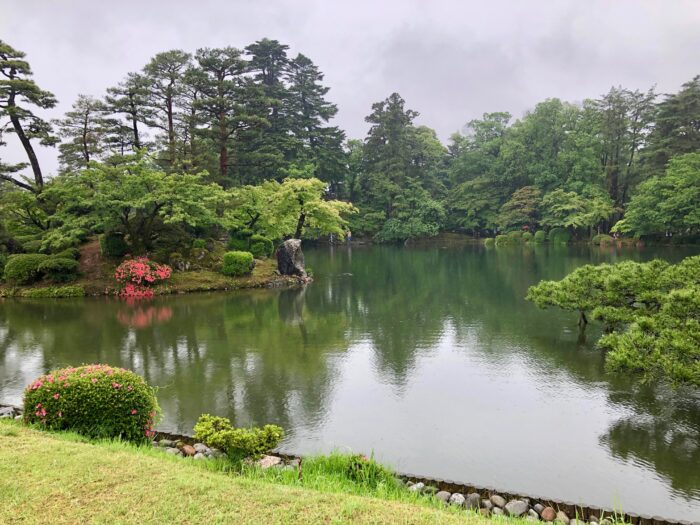
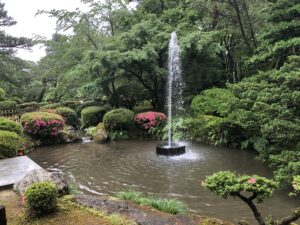
The Kenroku-En Garden was originally the outer garden of Kanazawa. The word Kenrokuen can be translated as Garden of Six Elements. It’s one of the three Great Gardens of Japan and covers over 25 acres. The garden features the first and oldest fountain in Japan, combining both the natural feature of water, and human artistry to devise a fountain pump that works from natural water pressure
Other notable features are the Kotoji-toro, the stone lantern with two legs, and the Karasaki Pine planted from seed by the 13th Lord Nariyasu.
SHUNKAEN BONSAI MUSEUM
Every plant in a Japanese garden is carefully placed and pruned to fit the garden’s aesthetic. Nothing is left to chance. However, these trees grow in soil.
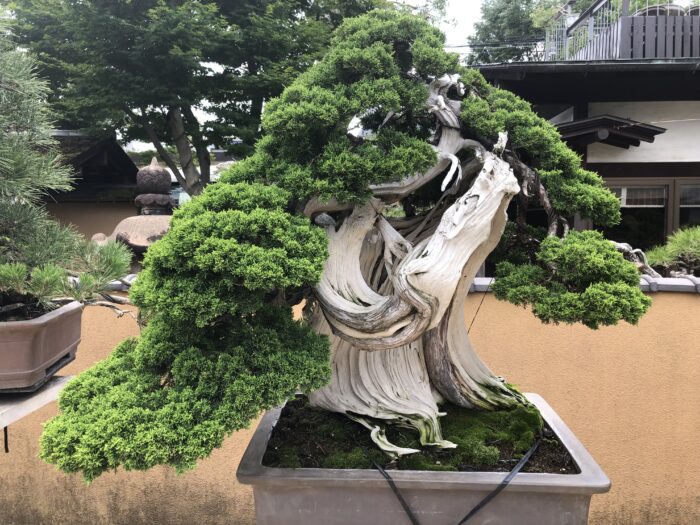
Bonsai is the art of planting trees in a container and pruning them so they grow in a certain way. Kunio Kobayashi is one of the most famous bonsai gardners in Japan, a man who occasionally takes a chain saw to a bonsai plant in order to bring it into the correct shape. Sound far fetched? That’s why I’ve included this video of Kunio Kabayashi styling a Taxus tree at the Crespi Cup in Italy in 2017. The before and after views are remarkable. No wonder Kobayashi has won the Prime Minister’s Award three times.
In 2002 Kobayashi founded the Shunkaen Bonsai Museum in the Chibu district on the outskirts of Tokyo. There are over 1,000 different bonsai on display, some for sale for thousands of dollars.
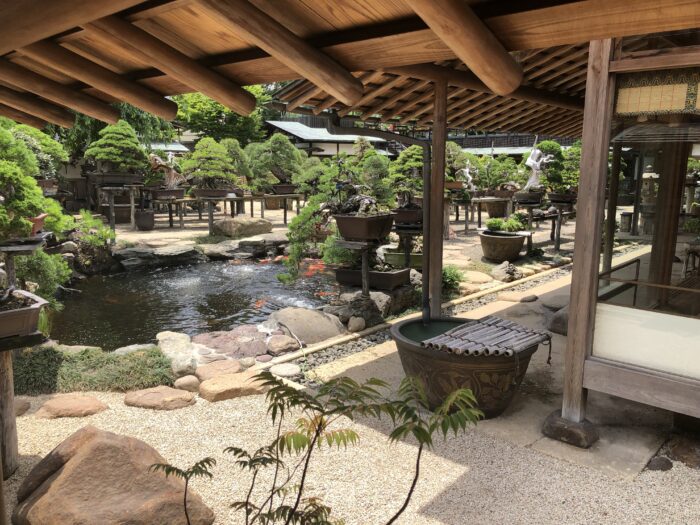
But the museum is not simply a nursery. It’s also a tea house so visitors can see how bonsai should be displayed in a home. The plants are rotated according to season and also to keep them healthy.
And almost any plant can become a bonsai — even a bougainvillea.
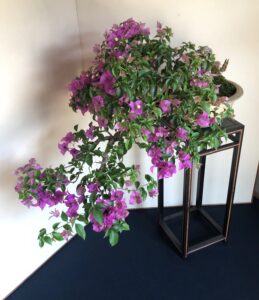
Japanese gardens and bonsai would seem to be the ultimate expression of nature combined with nurture and of simplicity joined to artifice to create serenity in the midst of an unpredictable world.
Photos by Author.

Sandra Wagner-Wright holds the doctoral degree in history and taught women’s and global history at the University of Hawai`i. Sandra travels for her research, most recently to Salem, Massachusetts, the setting of her new Salem Stories series. She also enjoys traveling for new experiences. Recent trips include Antarctica and a river cruise on the Rhine from Amsterdam to Basel.
Sandra particularly likes writing about strong women who make a difference. She lives in Hilo, Hawai`i with her family and writes a blog relating to history, travel, and the idiosyncrasies of life.

